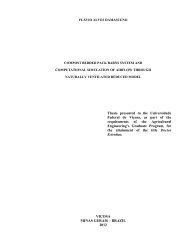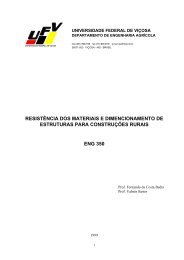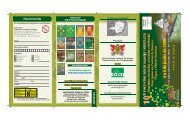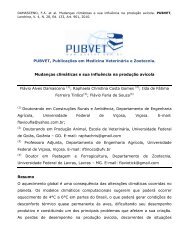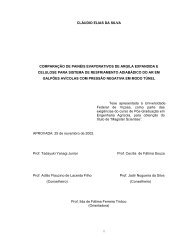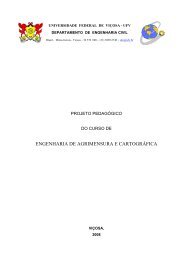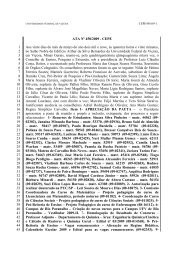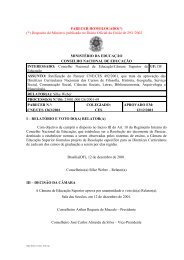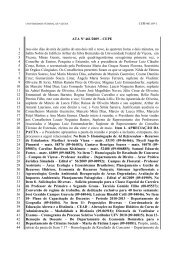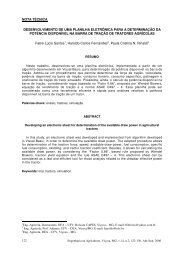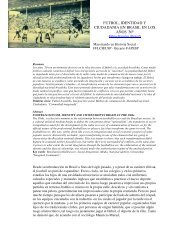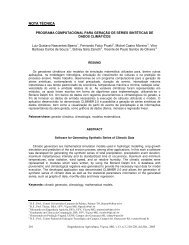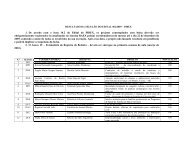ALKALOID BIOSYNTHESIS IN PLANTS: Biochemistry, Cell ... - UFV
ALKALOID BIOSYNTHESIS IN PLANTS: Biochemistry, Cell ... - UFV
ALKALOID BIOSYNTHESIS IN PLANTS: Biochemistry, Cell ... - UFV
Create successful ePaper yourself
Turn your PDF publications into a flip-book with our unique Google optimized e-Paper software.
<strong>ALKALOID</strong> <strong>BIOSYNTHESIS</strong> <strong>IN</strong> <strong>PLANTS</strong> 53<br />
tobacco cell line accumulated tryptamine and produced strictosidine when secologanin<br />
was added to the culture medium. These results demonstrate that two<br />
consecutive steps in the TIA pathway can be cooperatively expressed in a foreign<br />
plant species that does not normally produce these metabolites. Examination of<br />
the integration frequencies and expression levels of TDC and STR1 in tobacco<br />
showed that both transgenes were expressed in only 33% of the plants (86). Thus,<br />
the extensive phenotypic variation in alkaloid production in transgenic tissues (18)<br />
is partly caused by gene silencing phenomena affecting TDC and STR1.<br />
Tropane Alkaloids, Nicotine, and Other<br />
Polyamine Derivatives<br />
Some of the first attempts to metabolically engineer plant secondary products<br />
involved polyamine-derived alkaloids. Transgenic Nicotiana rustica root cultures<br />
expressing a yeast ODC gene produced higher levels of putrescine and nicotine<br />
(63). However, despite strong heterologous ODC expression, nicotine, putrescine,<br />
and N-methylputrescine levels increased only twofold, suggesting that ODC is<br />
not a rate-limiting step in nicotine biosynthesis. Overexpression of oat ADC in<br />
tobacco increased the accumulation of agmatine, the ADC reaction product (17).<br />
However, increased nicotine production was not detected despite suggestions that<br />
the putrescine required for nicotine biosynthesis is generated via ADC rather than<br />
ODC (66). It is possible that the additional agmatine was not accessible to the<br />
nicotine pathway.<br />
Tobacco root cultures transformed with a bacterial lysine decarboxylase (LDC )<br />
gene produced higher levels of cadaverine, the product of the LDC reaction, and<br />
the alkaloid anabasine, produced by the coupling of cadaverine and N-methylputrescine<br />
(46). LDC activity, and cadaverine and anabasine accumulation, could<br />
be enhanced by fusing LDC to the RBCS transit peptide (69), demonstrating the<br />
importance of directing foreign enzymes to appropriate subcellular locations.<br />
The H6H gene from H. niger was constitutively expressed in the hyoscyaminerich<br />
plant A. belladonna (183). Transgenic plants exhibiting high H6H activity<br />
contained almost exclusively scopolamine. Similar results were obtained in transgenic<br />
root cultures of A. belladonna (67) and Hyoscyamus muticus (75). A large<br />
variation in TPA content was observed in root cultures of H. muticus, a species with<br />
a high capacity for tropane alkaloid accumulation, expressing H6H. One line produced<br />
over 100-fold more scopolamine than controls, but hyoscyamine conversion<br />
was still incomplete (75). Transgenic tobacco plants expressing an H6H were also<br />
capable of converting exogenous hyoscyamine and 6β-hydroxyhyoscyamine to<br />
scopolamine, which accumulated in leaves (184). Wild-type tobacco plants are<br />
unable to convert these intermediates to scopolamine.<br />
Other Alkaloids<br />
<strong>Cell</strong> cultures of P. harmala accumulate two simple and interrelated tryptaminederived<br />
alkaloids: the harmane-type β-carboline alkaloids and serotonin. Serotonin



